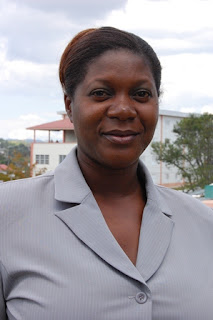Dengue fever is spread by an infected Aedes aegypti mosquito. The symptoms of dengue fever include a sudden high fever of 40-40.56 Celsius (104-105 Fahrenheit); headache, fatigue, nausea, vomiting, rash, joint and muscle pain.
As a result of fever and vomiting, dehydration may occur. Pain, nausea and fatigue may lead to a loss of appetite, weight loss and possibly death. The dengue haemorrhagic fever, if not managed or treated immediately, may result in severe anaemia and possibly death because of bleeding into organs and through various orifices of the body.
The treatment for dengue fever is to increase fluid, electrolytes and caloric intake. This can be achieved by drinking more fluids such as coconut water, and fruit and vegetable juices. Fruit and vegetable juices contain simple sugar that is able to provide energy and electrolytes such as sodium and potassium to maintain the body's fluid balance and maintain regular heart beat.
During a bout of fever, the need for calories and fluids increases because the immune system is fighting the foreign bodies that are present in the body. The brain (hypothalamus) regulates the body temperature and requests more water, which is pulled from the cells if fluid intake is not enough. Pulling of water from the cells results in dehydration, and if left untreated, it may result in death. Therefore, it is recommended that fluid intake be increased to meet or exceed demand (six to eight, eight-ounce cups per day).
Nausea
Additional calories are needed in the form of small, frequent, nutrient-dense (little bit with lots of different nutrients) meals and snacks. This could include thick porridge, thick soups, fruit and cheese, pastry and cheese, and vegetable juices with powdered milk. Additional sugar or sweeteners and vegetable fat are recommended to increase calories and to maintain or achieve appropriate body weight.
When nausea is present, dry foods should be consumed that are non-greasy and low in fat, liquids should be consumed about an hour before or after meal, food should be consumed when in an upright sitting position.
For persons with dengue haemorrhagic fever, they are usually admitted to hospital and given intravenous fluids or drip and possibly given a blood transfusion. Oral fluids are given when recuperating but eventually additional iron-rich foods should be added to diet in the form of dried peas, dried beans, red meat, dark, green leafy vegetables to prevent or treat anaemia. When the iron-rich foods from plant source is being consumed, vitamin C-rich foods should be a part of the same meal. Dried peas and callaloo should be eaten with orange or guava juice or raw tomatoes to aid in the absorption of iron.
It is important that we make healthy food choices to ensure that sick time will be short and that, after dengue, poor nutrition will not be major problem.

No comments:
Post a Comment